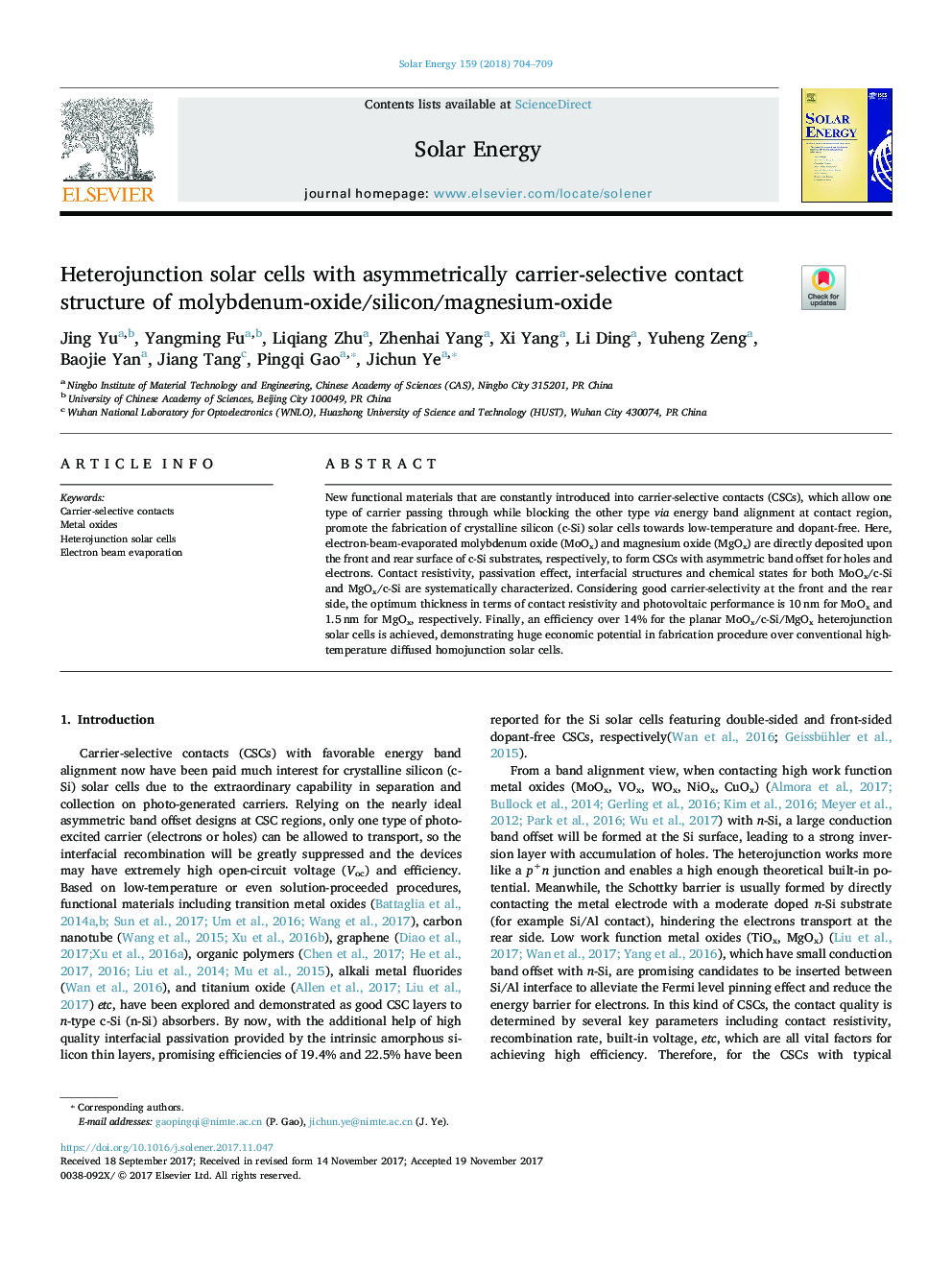| Article ID | Journal | Published Year | Pages | File Type |
|---|---|---|---|---|
| 7936110 | Solar Energy | 2018 | 6 Pages |
Abstract
New functional materials that are constantly introduced into carrier-selective contacts (CSCs), which allow one type of carrier passing through while blocking the other type via energy band alignment at contact region, promote the fabrication of crystalline silicon (c-Si) solar cells towards low-temperature and dopant-free. Here, electron-beam-evaporated molybdenum oxide (MoOx) and magnesium oxide (MgOx) are directly deposited upon the front and rear surface of c-Si substrates, respectively, to form CSCs with asymmetric band offset for holes and electrons. Contact resistivity, passivation effect, interfacial structures and chemical states for both MoOx/c-Si and MgOx/c-Si are systematically characterized. Considering good carrier-selectivity at the front and the rear side, the optimum thickness in terms of contact resistivity and photovoltaic performance is 10â¯nm for MoOx and 1.5â¯nm for MgOx, respectively. Finally, an efficiency over 14% for the planar MoOx/c-Si/MgOx heterojunction solar cells is achieved, demonstrating huge economic potential in fabrication procedure over conventional high-temperature diffused homojunction solar cells.
Related Topics
Physical Sciences and Engineering
Energy
Renewable Energy, Sustainability and the Environment
Authors
Jing Yu, Yangming Fu, Liqiang Zhu, Zhenhai Yang, Xi Yang, Li Ding, Yuheng Zeng, Baojie Yan, Jiang Tang, Pingqi Gao, Jichun Ye,
